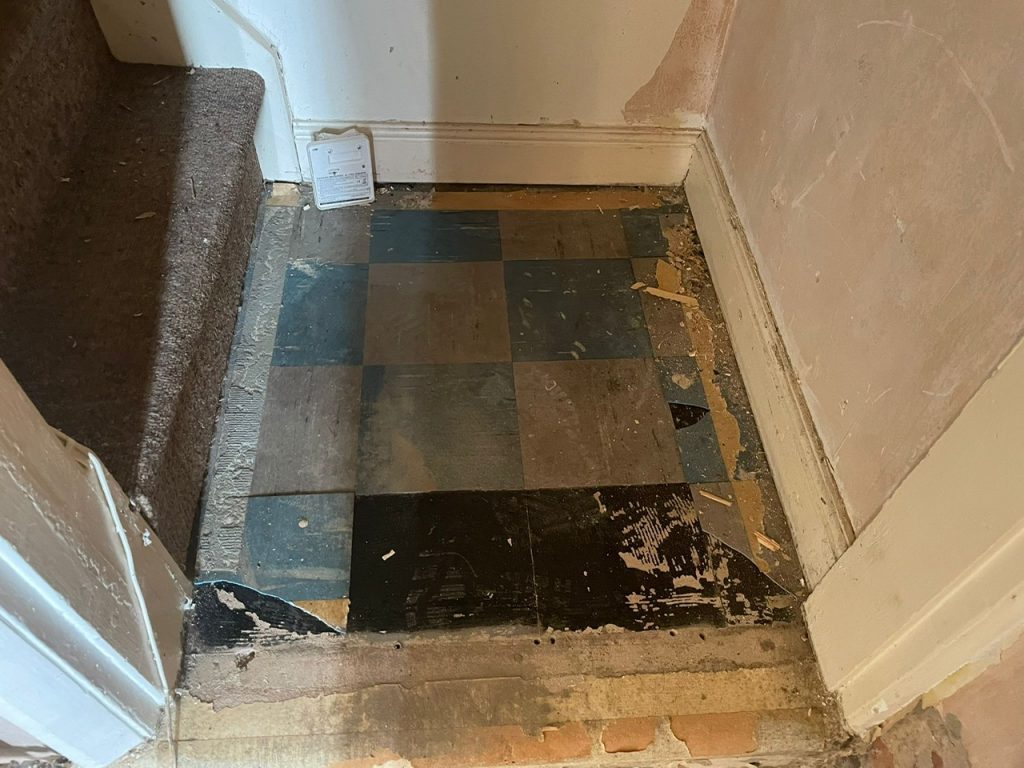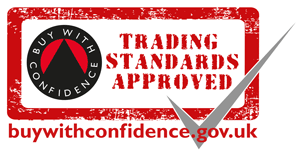Asbestos was used as a common building material until 1999 when it was banned for use in the UK. Thousands of homes in the UK today, still contain asbestos. Not only is it lurking in loft insulation, artex and garage roofs, but Asbestos can also be found in floor tiles and vinyl. Asbestos tiles were not only used on floors, they were also used on wall tiles and ceiling tiles! Tiles were made by bonding asbestos with materials such as vinyl. It was also common for the adhesive used to install the tiles to contain asbestos too!
Why was asbestos used in floor tiles?
Due to floors in areas such as kitchens and bathrooms being high-traffic areas, the durability and strength of asbestos was a perfect material to use. Other types of flooring installed which does not contain asbestos, may still have been applied using black mastic adhesive which does contain asbestos.
In general, asbestos was used in floor tiles from the 1920s to 1970s but they are found in any property built before the year 2000. Manufacturers of asbestos floor tiles became aware of the asbestos regulations and stopped producing them, however, stockpiles of already-made floor tiles were still used before the ban came into place.
How to tell if floor tiles contain asbestos
Asbestos fibres in floor tiles are not visible to the naked eye, therefore the only way to know if a floor tile contains asbestos is by sample testing. Some indicators which may suggest the tiles are asbestos include the year they were installed, their appearance and their size. Asbestos tiles were mainly installed between 1920-1970 but can be found in any property built pre-2000. Vinyl tiles / plastic tiles were mainly manufactured in 3 sizes: 9×9, 12 x 12 and 18 x 18 inches. Asphalt tiles were mainly manufactured in a 9×9 or 12×12 inch size.
What do asbestos floor tiles look like?
Vinyl / plastic tiles were mainly manufactured in square size and coloured with light colours such as cream, blue, pink and green. Asphalt tiles were again mainly manufactured in a square size and are darker in colour, due to asphalt being the main material. Examples of asbestos floor tiles are shown below:
How to get floor tiles checked for asbestos
A small sample of the tile is carefully removed by a professional asbestos testing company. The sample is taken to a UKAS-accredited laboratory where an analysis of the material takes place.
Asbestos testing is the most accurate option for determining if your floor tiles contain asbestos.
Fibres cannot be seen by the naked eye, and although various factors may lead to the presumption that a tile could contain asbestos, it is not accurate. If you plan to carry out the removal of floor tiles or carry out work on suspected flooring, then it is strongly recommended to get them tested professionally first.

Can asbestos floor tiles be left in place?
If asbestos floor tiles are in good condition and show no signs of deterioration, then yes they are safe to leave in place. As with all asbestos materials, the installation date was likely to be over 50+ years ago, therefore the likelihood of the tiles lasting a further 50 years is unlikely.
How dangerous are asbestos floor tiles?
Asbestos floor tiles are generally made of a durable, hard-wearing material which is suitable to be walked on in high-traffic areas. Considering the fact there are many homes in the UK with asbestos floor tiles still present, they are a long-lasting and strong material.
Asbestos fibres are only released once a material becomes disturbed or damaged. Therefore, if the asbestos floor tiles are in good condition and show no signs of deterioration, they are not classed as being dangerous. Once the floor tiles start to be removed, damaged, and disturbed, this is when the fibres release into the air and you are at risk of health implications from asbestos-related diseases
Can I remove asbestos floor tiles myself?
There are no regulations to stop homeowners from removing asbestos from their own properties. However, It is always advisable not to remove any kind of asbestos material yourself. If you are not correctly trained to remove asbestos safely, you can be putting yourself and your family at risk.
There are many asbestos removal companies who can carry out the work for you – and ensure it’s safe to back into the property after removal.
Correct disposal of asbestos floor tiles
You may be wondering how to dispose of asbestos floor tiles. If you have used an asbestos removal company, then they should provide the disposal within their service. However, we understand that sometimes, tiles are removed and it’s not until afterwards you realise, they are asbestos – then you are left wondering how to dispose of them.
Top tips for asbestos floor tile disposal :
- Do not put them in your general waste skip. They can contaminate the whole load and cause health risks to the skip company
- Try your local council, certain councils offer a local collection or disposal of small quantities of asbestos from domestic properties
- Use a licensed asbestos waste transfer station. Private companies like Smart Asbestos, offer a wide range of asbestos floor tile disposal options
- Double bag the floor tiles and ensure they are tied at the top. If you have asbestos warning labels, then attach these to the bags
- Never dispose of asbestos with anyone who is not licensed to accept it
Need some advice about Asbestos waste?
Call us on 01623 272 611 and we'll be happy to help
